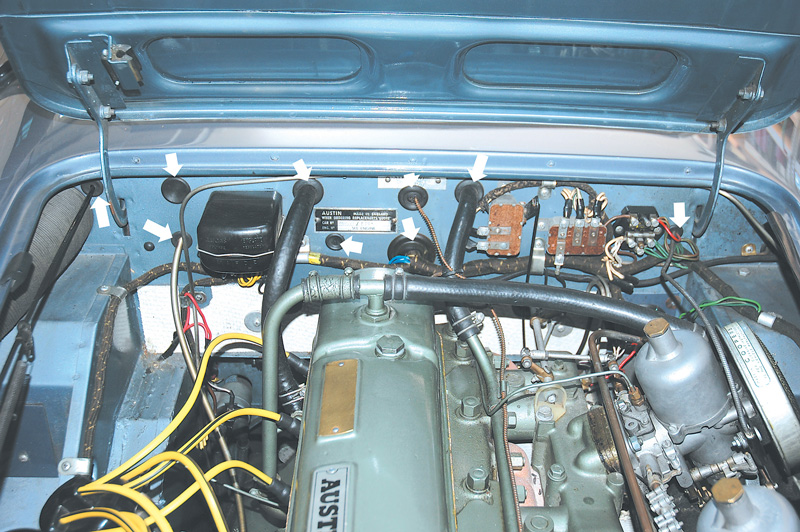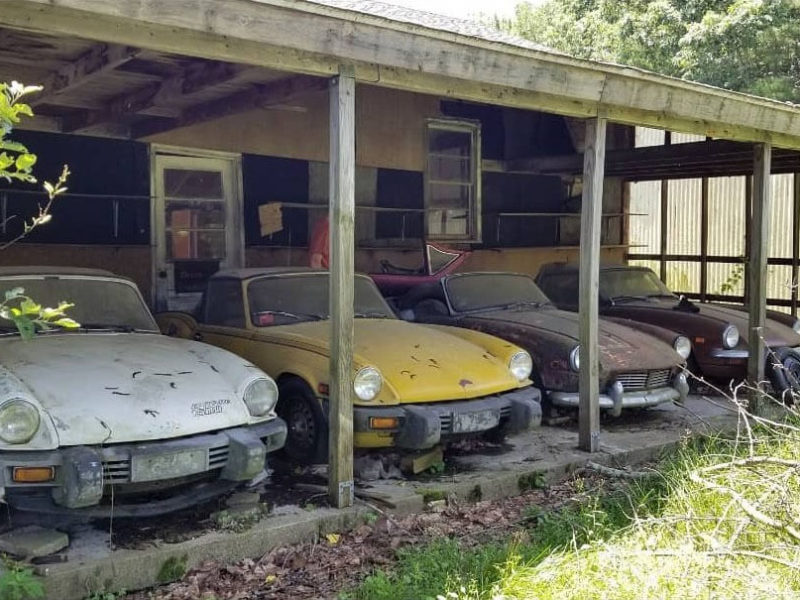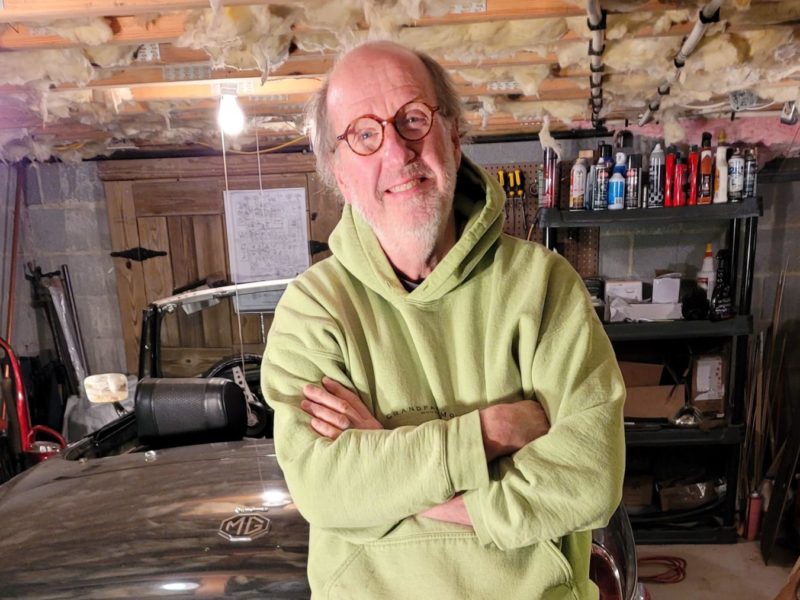Over the years, Healeys have gotten a reputation for having a very hot cockpit. I’m here to argue that the reputation is undeserved, that heat in the interior is due to poor maintenance or careless restoration by previous owners, and that with some simple do-it-yourself repairs, you can correct this problem. The same solutions will also help with any other British car. In order of the difference they will make, your three repair strategies are: First, fix the interior panels so that heat from the engine compartment isn’t blowing directly into the footwells. Second, replace all missing or bad grommets, so there aren’t any openings in the firewall through which hot engine air can get into the interior. Third, if you’re replacing the carpets, install a good modern insulation product under the carpets to provide better heat and sound protection.
Fix One: The Transmission Tunnel and Bulkhead
Here’s the basic problem: Most of the heat is due to hot engine compartment air getting into the interior through openings that aren’t supposed to be there. Close those openings and nearly all your heat problems will go away. The most significant sources of hot air usually are from around a bent or badly installed vertical transmission bulkhead, from between the transmission bulkhead and transmission tunnel, and from under the transmission tunnel.
To correct these problems, unscrew and remove the gearbox cover and the gearbox cover extension panel. You may find that these covers aren’t even screwed into place, or are so badly bent that they don’t fit properly. Check to make sure that the extension panel fits snugly against the sides of the footwell and the floor. If not, straighten it so that it does. Check to make sure that the carpeting wraps around its edges, because this carpeting provides the cushion against the footwell carpeting to seal that edge. If the carpet was cut too short to wrap around, then you’ll need another piece of carpet, or some weather stripping on the backs of the edges. Then screw the panel securely into place using three long sheet-metal screws on each side extending through the carpeting, through the bulkhead, and into the edges of the footwells. With the tunnel carpeting removed, refit the transmission tunnel, making sure its front edge fits snugly up against the gearbox cover panel carpeting and down on the padding underneath the floor carpet. If it doesn’t, straighten it and/or reposition the screws holding it in place so that it does fit snugly. At the same time, check to make sure that the shift lever boot is in good shape, and is properly fitted into the opening of the transmission tunnel. If it wasn’t, you’ve found another serious heat source.
Fix Two: Openings in the Firewall
There are lots of holes in the firewall intended for cables, wires, and hoses to go through. If the rubber grommets and plugs that seal those holes are missing or in bad shape, you’ve got another source of cockpit heat. To see where the heat is getting in, put the car in a closed garage at night. Turn off the garage lights, and put a bright light in the engine compartment, then get in the car. Every place you can see light is an opening where heat is sneaking in. Then, put the light source in the interior, and look in the engine compartment. Once again, any light getting through shows a hole where hot air can get through.
The best way to fix these holes is to order a new firewall grommet set (Moss part 681-018) and plug each of the holes. If you’re not doing a complete restoration, the ones through which cables and harnesses go may be difficult to fit, but if you can’t disconnect the wire or cable, the grommet can be slit with a razor blade, then fitted around the wire and tucked into the hole. If you see any other holes or openings, even a piece of duct tape over the hole is better than leaving it open.
Fix Three: Improve the Insulation.
When your Healey was first assembled, it was fitted with insulation. Though the material wasn’t as good as available today, it made a big difference. If the insulating material is worn or missing, that’s your third source of heat. If you are redoing the interior, be sure to install insulation in the proper places, and use the best available material.
Originally, the floorboards on the Healey were insulated with roofing felt (“tar paper”) overlaid with woven fiber mats. Unless you’re concerned with absolute concours accuracy, I recommend that you substitute a material that combines heat and noise insulation with heat reflection capabilities, such as Dynamat insulation mats (Moss part number 409-026). A kit includes four one-foot by three-foot mats that can be cut and glued down to cover the entire floor. Use heat shield adhesive and glue the panels with the reflective side against the floor.
The vertical sections of the interior, including the sides of the footwell and the tonneau bulkhead behind the seats, would have had jute fiber pads glued under the carpet. Similar pads, now made of laminated felt, are included with standard carpet kits. Instead of these pads, I recommend using a material like Moss’s “Heat Shield Material” (part number 409-015). One four-foot by six-foot sheet should be enough. Cut this material into pieces using the kit’s felt pieces for patterns, then glue them to the individual body panels with the reflective side against the floor, and tape the seams. Once this insulation is in place, the carpeting pieces can be glued to the insulation. For the transmission tunnel, you’ll need to carefully cut and tape together a piece the same size and shape as the tunnel carpet with holes for the carpet snaps. This piece should lie loosely on top of the tunnel, held in place by the carpet snaps and carpeting on top.
With these three fixes, I guarantee your interior will be comfortably cool and quiet and long days on the road, even on hot days, will be a pleasure.
By Gary Anderson









'Avoiding the Dreaded Healey Hotfoot' has no comments
Be the first to comment this post!